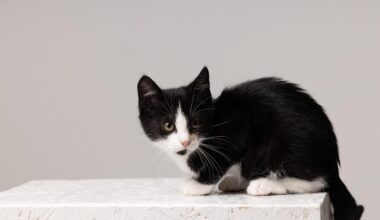Pug Behavior: Understanding Your Pug’s Personality
Pugs are well-known for their charming and playful personalities. They thrive on individual attention and often bond closely with their human companions. This breed is characterized by its affectionate behavior, marked by its loving nature. Pugs are eager to please, making training a relatively smooth process if approached with patience. Their keen ability to read human emotions allows them to sense when their owners are happy or sad. This emotional intelligence plays into their charming demeanor, making them the perfect companions for families. Furthermore, pugs enjoy social interactions both with humans and other pets. They express excitement through playful antics and are often seen snuggling with their families on the couch. However, like all dogs, pugs need structured training and socialization from an early age. Without this guidance, they may develop peculiar habits, such as stubbornness or over-enthusiasm when greeting visitors. Overall, understanding their unique personality traits can significantly enhance the experience of owning a pug. Regular engagement helps them stay mentally stimulated and prevents behavioral issues associated with boredom.
Pugs possess unique characteristics that set them apart from other breeds. Their distinctive appearance, coupled with their lively temperament, creates a delightful personality blend. One of the most notable aspects of pug behavior is their clownish charm. They often perform amusing tricks or silly antics to entertain their families. This intrinsic need for interaction makes them sociable dogs but also sensitive to changes in their environment. In situations where they feel neglected or ignored, pugs may develop anxiety or display challenging behaviors. To mitigate this risk, it’s crucial for owners to provide consistent affection and companionship. Communication with your pug is vital, whether through verbal praise or physical contact. A strong bond encourages a pug’s loyalty and reduces potential behavioral problems. Additionally, pugs are known for their strong desire to be included in family activities and experiences. This breed prefers to be part of what’s happening, making them excellent companions for children. However, as energetic as they are, pugs also enjoy quiet moments, especially cuddling with their loved ones on a lazy afternoon. This duality makes pugs adaptable to various lifestyles, from active families to retirees.
Training and Socialization are critical components in shaping a pug’s behavior. Pugs respond best to positive reinforcement techniques, such as treats or praise. Training sessions should be short and engaging since pugs can quickly lose interest. Basic commands like “sit,” “stay,” and “come” can be taught through patience and consistency. Socialization, especially during puppyhood, is imperative. Exposing your pug to different people, pets, and environments can help them become well-adjusted adults. A well-socialized pug is less likely to develop anxiety or become overprotective of their family. Dog parks can provide an excellent venue for gentle introductions to other dogs. Owners should monitor playtime to ensure that interactions are friendly. Furthermore, attending puppy classes or obedience training can enhance social skills while strengthening the bond between owner and pet. Once established, ongoing training keeps your pug mentally engaged and less prone to boredom-related issues. Keep in mind that positive experiences will foster a dog’s confidence, which translates into a well-rounded personality. Ultimately, investing time in training and socialization empowers your pug to thrive as a lovable family member.
Health and Well-being play significant roles in a pug’s overall behavior and temperament. Regular veterinary check-ups are essential for maintaining health, especially since pugs can be prone to certain health conditions, including obesity and respiratory issues. Unmanaged health problems can negatively affect a pug’s behavior, leading to lethargy or irritability. A balanced diet tailored to their specific needs can help prevent obesity, which can, in turn, enhance their energy levels and enthusiasm. Exercise is also key to a pug’s well-being, but care must be taken to monitor their respiratory health, especially during hot weather. Short, manageable walks and play sessions are suitable to keep them active without overexertion. Ensuring a comfortable living environment contributes significantly to a pug’s happiness. A cozy bed, safe toys, and a worry-free atmosphere allow your pug to feel secure and relaxed at home. Furthermore, adequate mental stimulation through games and training can prevent boredom-related behaviors. Regular engagement helps your pug remain active and reduces the chance of developing negative habits due to loneliness.
Recognizing Emotional Signs
Pugs are remarkably expressive dogs, using a range of body language and vocalizations to communicate their feelings. Understanding these behavioral cues is paramount for ensuring your pug’s emotional well-being. For example, when your pug is happy, they often exhibit behaviors like wagging their tail, bounding around, or play bowing. When feeling anxious or stressed, a pug might display signs such as excessive barking, whining, or cowering. Recognizing when your pug is uncomfortable or anxious helps foster a trusting relationship. Additionally, during times of stress or change, such as moving to a new home, pugs might need extra support. Providing a safe space, along with comforting objects like a favorite blanket or toy, can help alleviate their distress. Notably, social interactions greatly influence a pug’s mood; they thrive in environments where they receive affection and companionship. In contrast, potential separation can lead to separation anxiety. Observing your pug and noting these emotional signs allows for proactive strategies to enhance their happiness and overall behavior. Therefore, paying attention to their feelings and adjusting your responses can create a nurturing, loving environment.
Another interesting aspect of pug behavior is their ability to adapt to various environments. While they are often energetic and playful, they are equally content spending quiet time indoors. Pugs enjoy being by their owners, making them perfect companions for people with busy lifestyles. They don’t require extensive exercise but bask in receiving love and attention from family members. Providing them with adequate playtime and mental engagement helps prevent boredom. Pugs sometimes exhibit quirky behaviors such as grunting or snoring, which can be endearing to their owners. These sounds are typical due to their unique facial structure, commonly referred to as brachycephalic. Owners should ensure their pug is comfortable and healthy by monitoring any unusual vocalizations that may indicate health problems. Maintaining good overall health enables pugs to live happier lives, positively influencing their behavior. Regularly engaging in light exercise, such as short walks or interactive toys, allows pugs to flourish emotionally and physically. Overall, adapting to the pug’s engaging nature enhances the bond between owner and pet, contributing to a fulfilling companionship full of joy.
Conclusion
In summary, understanding pug behavior enhances the owner-pet relationship significantly. Pugs are loving, playful, and quirky dogs, each with a unique personality. Owners can nurture their pugs’ traits through consistent training, health management, and emotional support. Recognizing and responding to their behavioral cues creates a strong bond built on trust and affection. Regular socialization and positive reinforcement techniques are vital for developing a well-adjusted and confident pug. Additionally, providing a comfortable environment, including proper exercise and mental stimulation, helps ensure their happiness. Paying attention to the subtle emotional signs allows owners to foster a rewarding companionship where both parties thrive. Furthermore, regular health check-ups confirm that these endearing dogs remain in good condition. Thus, by investing time in understanding and embracing a pug’s behavior, you are enriching not just their life but also your own.
Throughout the experience, pugs offer endless joy. With their affectionate nature, comic antics, and responsive behavior, owning a pug can be immensely rewarding. The bond formed between a pug and its owner is characterized by mutual respect and unconditional love and has the power to transform daily living into a delightful journey. Establishing this bond requires effort and patience, yet the joy derived from a trusting relationship is invaluable. By focusing on their unique personalities, owners can curate experiences that benefit both the pug and themselves. The happiness reflected in a pug’s behavior is rooted in a loving environment, showcasing the importance of care and companionship. Ultimately, the journey of understanding pug behavior is holistic, requiring ongoing attention to their physical, emotional, and social needs. As you navigate life with your pug by your side, remember that each day holds opportunities for deepening your connection, creating cherished memories that last a lifetime.


